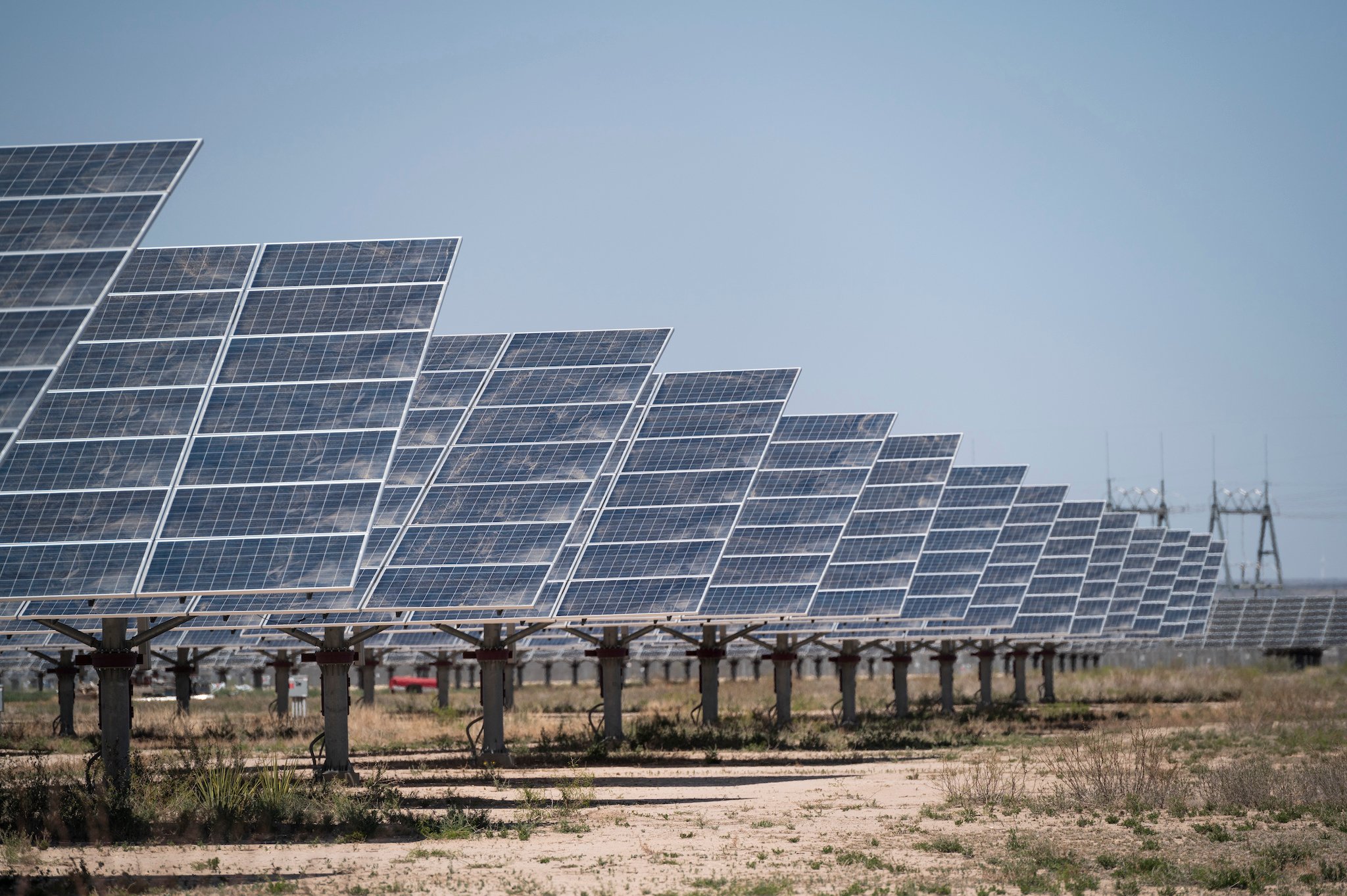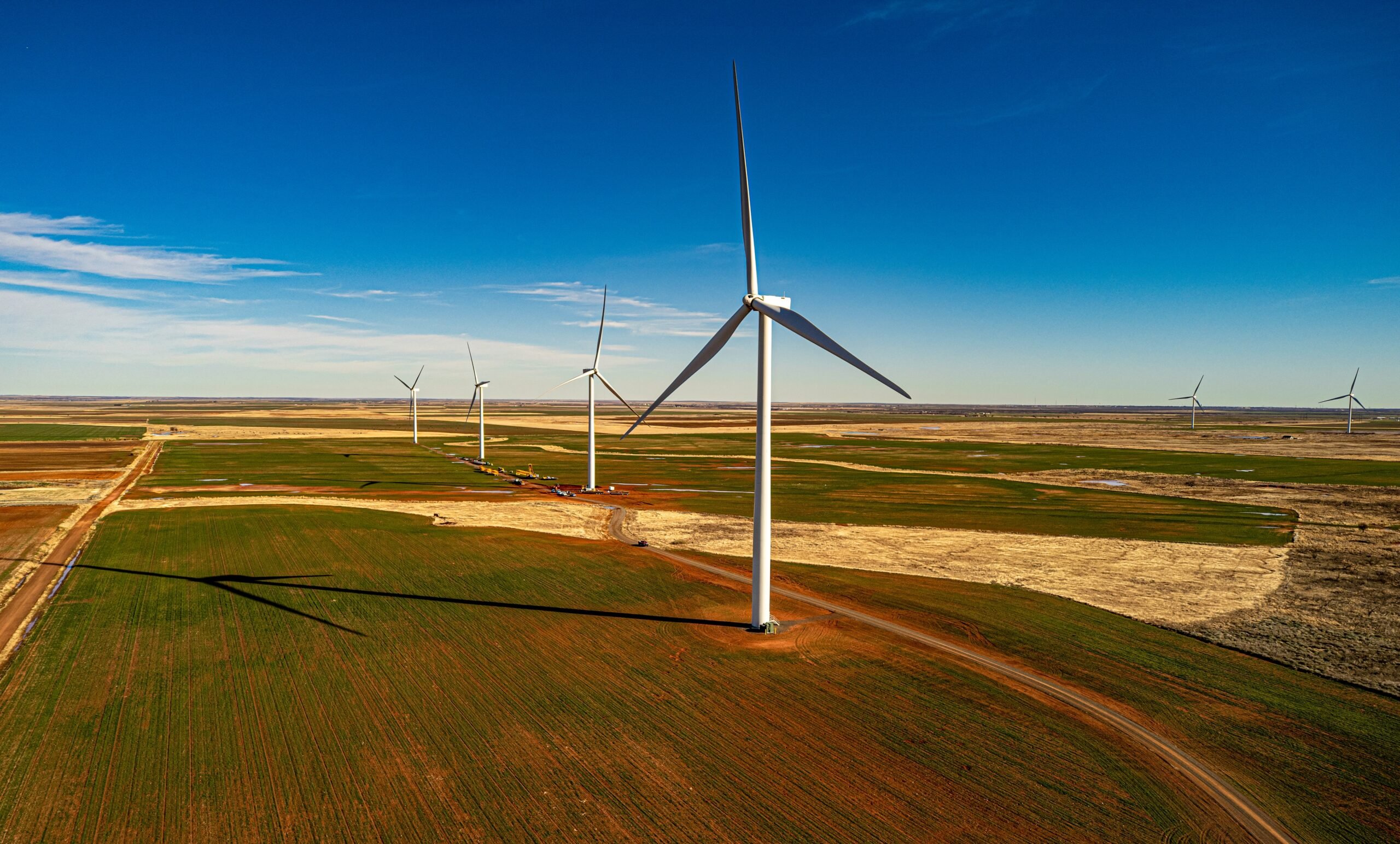
Energy Advocates Urge Biden to Declare Climate Emergency
Intervention by the federal government could protect Gulf Coast "sacrifice zones" while keeping the power on amid record temperatures.

Originally published by Truthout.
Texas energy and environmental analysts and advocates are urging President Joe Biden to formally declare a state of climate emergency in order to shore up the state’s precarious grid.
While Biden announced modest steps to combat the climate crisis last week at a shuttered coal-fired power plant in Somerset, Massachusetts, being retrofitted for offshore wind power production, he stopped far short of declaring a national emergency.
Such a declaration would unlock new executive powers that could help ensure increased reliability for Texas’s faltering power grid, while reining in runaway methane emissions from oil and gas infrastructure in the Permian Basin, analysts and advocates based in Texas tell Truthout. Moreover, they say, new executive power to reinstate a crude oil export ban could also potentially lower domestic gas prices while supporting Gulf Coast communities of color, often dubbed “sacrifice zones,” struggling with the impacts of increased fracked gas refining.
The executive actions President Biden announced last week will bolster the domestic offshore wind industry in the Gulf of Mexico and the Southeast. The administration said it also plans to spend $2.3 billion to help communities cope with longer-lasting heat waves through programs administered by the Federal Emergency Management Agency (FEMA), the Department of Health and Human Services, and other agencies.
Like much of Europe and millions of Americans across the nation, Texans continue to bake under longer-lasting heat advisories during a summer on pace to be the hottest on record—a fact scientists say is linked to the climate crisis.
The searing heat has driven electricity demand to record highs, nearly imperiling Texas’s shaky power grid, which remains independent of the nation’s two other national grids, the Western Interconnection and the Eastern Interconnection, even after an emergency blackout during Winter Storm Uri in February of 2021 left as many as 700 Texans dead and millions without power and water for days.
The state’s grid operator, the Electric Reliability Council of Texas (ERCOT), said demand for electricity briefly topped 80,000 megawatts for the first time ever last week, surpassing even the worst-case summer forecasts ERCOT had anticipated.
ERCOT previously put out a misleading press release blaming wind energy for the grid’s shortfalls.
Twice this month, ERCOT called on Texans, many of whom are still suffering from lingering trauma as a result of the February 2021 blackout, to limit power use during sweltering, three-digit afternoons as demand threatened to overwhelm supply.
Now, ERCOT is ordering the state’s aging power plants to delay maintenance and exceed their pollution limits in order to continue operating around the clock to pump out power. Energy experts warn the record-shattering pace is further taxing a system already near its limits.
ERCOT previously put out a misleading press release blaming wind energy for the grid’s shortfalls despite the fact that the amount of wind generation was within state projections for a summer day while gas, coal and nuclear underperformed. Energy analysts, however, have pointed out that solar energy and battery storage in particular have played perhaps the most central role in keeping the state’s power grid afloat this summer.
A climate emergency declaration now could prove crucial in bailing out the state’s precarious power grid. According to reporting from Brian Kahn, such a declaration would not only invoke additional emergency powers such as those invoked by President Biden’s Defense Production Act (DPA) to fund additional production of solar panels, it could also provide a cash infusion for clean energy technology if federal agencies direct more money to the DPA beyond its limited budget of $545 million.
Moreover, President Biden could wield the $650 billion federal procurement budget and implement climate resiliency projects under the Stafford Act, which directs and coordinates FEMA, as additional tools under a climate emergency. Together, the DPA, procurement budget and Stafford Act could allow the government massive purchasing power, freeing up billions for clean energy, electric vehicles and, crucially, battery-storage technology that could stabilize Texas’s power grid and save Texans from rolling blackouts during future record-setting, climate-fueled summer heat waves.
“Having more storage on the grid is absolutely one of the most important things we could do to increase grid reliability and resiliency,” said Doug Lewin, an energy consultant and president of Stoic Energy based in Austin, Texas, in an interview with Truthout.
“These plants are being run into the ground, and we simply can’t count on them.”
It would take several kinds of bulk storage, he noted, including football field size installations of battery storage as well as distributed storage through standalone batteries. Moreover, he said, electric vehicle storage combined with other forms of storage, including iron air and vanadium flow batteries, will prove key to having a resilient and reliable power grid.
“Storage would be a much better way to meet peak [demand] than these ‘50s-era [power] plants which often have very few pollution controls, but were grandfathered in, given [that] they were operating before the Clean Air Act passed,” Lewin told Truthout.
Solar storage, paired with the state legislature and/or the state Public Utilities Commission (PUC) directing energy transmission distribution in the state to come up with concrete action plans on energy efficiency, are among the most important tools for grid reliability amid an intensifying climate crisis, Lewin explained. Unless the PUC intervenes, Texas will continue to have energy efficiency attainment that is 80 percent lower than the average among the 27 states with currently existing efficiency goals.
“A call for [energy] conservation is not energy efficiency. Conservation is reducing your energy use and not getting the same output. Efficiency is: You’re getting the same outcome, the same result, while using less energy,” Lewin told Truthout. “Conservation is deprivation … and there’s a real question as to how much conservation ERCOT and the PUC can call for before the general public starts saying, ‘Forget this. I’m not doing it.’”
According to Texas Sierra Club Chapter Director Dave Cortez, both energy efficiency and increased storage would also help to drive down the spiking energy bills Texans have faced after several cold snaps last winter, as well as this summer’s heat wave. “These [fossil-fuel powered] plants are being run into the ground, and we simply can’t count on them,” he told Truthout. “It’s not a reliable system, and it leaves all of us exposed to extremely high prices for electricity.”
Cortez warned that after this summer’s heat wave is over, millions of Texans could be saddled with extremely high debt due to skyrocketing electricity bills. Politicians and regulators must make plans now to prevent utility shutoffs, just as they did during the pandemic, he said.
Beyond shoring up Texas’s grid, Cortez and other Texas environmental and energy advocates are urging President Biden to invoke emergency powers to suspend offshore oil and gas leases in the Gulf of Mexico and to ensure that the final 2023-2028 Oil and Gas Leasing Program includes no new oil and gas leasing anywhere off the coast of the United States, including Alaska and the Gulf.
Reinstating the 40-year-old crude oil export ban that Congress lifted in 2015 would not only help to rein in skyrocketing methane emissions from leaking and venting oil and gas infrastructure in the Permian Basin, it would also potentially bring down prices at the gas pump, advocates say. While restricting exports would likely flood the United States domestic market, causing prices to lower, refiners could counter that trend by reducing output and raising prices.
“They’ve been pummeled by extreme storms from South Texas in the Rio Grande Valley all the way to New Orleans.”
An Oil Change International report estimates methane emissions from the Permian will amount to more than 9.5 billion tons of CO2-equivalent by 2050 as fracked gas extraction is expected to increase 50 percent over the next decade to meet global demand (as opposed to domestic demand). That’s in direct opposition to the 40 percent decline climate scientists say is needed to keep warming under 1.5 degrees Celsius.
Further, Permian oil and gas is primarily shipped via pipelines to the Gulf Coast and refined in toxic petrochemical plants for export on the global market. If the dozens of planned oil, petrochemical and so-called liquefied natural gas (LNG) export projects under federal jurisdiction are built, Gulf Coast communities and ecosystems will continue to suffer the disproportionate impacts of added pollution—and then take added hits during climate-fueled hurricanes.
During the Winter Storm Uri blackout, Cortez says, “We saw gas companies continuing to export gas even though there was a supply shortage of gas to our power plants…. Fundamentally, the communities along the Gulf Coast that are already struggling … not just [with] skyrocketing bills, in terms of their electricity and difficulty keeping their home livable, cool and affordable; they’ve been pummeled by extreme storms from South Texas in the Rio Grande Valley all the way to New Orleans.”
Frontline climate activist John Beard, who spent decades working at a local Exxon plant in Port Arthur, Texas, and later founded the Port Arthur Community Action Network, likewise urged President Biden to take decisive action to halt new oil and gas leases and LNG projects in and near the Gulf. “Fortune favors the bold, and we look for our president to provide the leadership to be the climate president he said that he was going to be,” Beard says. “What has happened is now the president has been put in a position where basically he has to put up or shut up. He can no longer tell us about these things and not take the action necessary.”
In terms of the modest executive actions President Biden did announce last week, Cortez told Truthout that the administration is basically just putting more money behind energy and climate resiliency programs that already exist, rather than offering new ones. Still, Cortez remains cautiously optimistic about a new effort by the Department of the Interior to expand offshore wind power at two sites in the Gulf, including one off the coast of Texas.
The Sierra Club and other environmental organizations are pressuring the Bureau of Ocean Energy Management to attach strong labor and worker training and safety standards to the offshore wind leases Biden announced last week, as well as strong environmental safeguards for endangered wildlife.
“We want to see Texans get the maximum benefit from investments in offshore wind, and right now, because it’s Texas and Louisiana and other horrific Gulf Coast state governments, there’s no guarantees that these are going to be family supporting, good-paying jobs,” Cortez says.
“We want to see Texans get the maximum benefit from investments in offshore wind, and right now … there’s no guarantees that these are going to be family supporting, good-paying jobs.”
He advocated for training at Texas high schools and community colleges in areas that depend on the building trades—places like Brownsville, Port Arthur, Beaumont and Corpus Christi. Strong labor standards for offshore wind leases, Cortez argues, would ensure long and stable careers for thousands working to build and manufacture the component parts to service wind farms in federal waters off the Gulf. Right now, no such plans are in place.
For Cortez, a just transition must be paired with a more radical move toward a system of energy democracy, in which working-class people are actually able to shape decisions around how they get their power and water. This is especially critical after Winter Storm Uri ushered in a massive wealth transfer from working-class Texans to multibillion-dollar energy corporations like Energy Transfer Partners, CenterPoint Energy and Oncor, which continue to line the pockets of state lawmakers like Gov. Greg Abbott and Lt. Gov. Dan Patrick.
“Our government is still captured by the oil and gas industry, and that’s what allowed the oil export ban to be lifted in the first place,” Cortez says. “That’s what allowed [former President Barack] Obama to approve the construction of Keystone XL in Texas. And that’s still what’s costing all of us so much at the pump, and is allowing this broken system to remain in place.”
Copyright, Truthout.org. Reprinted with permission.



